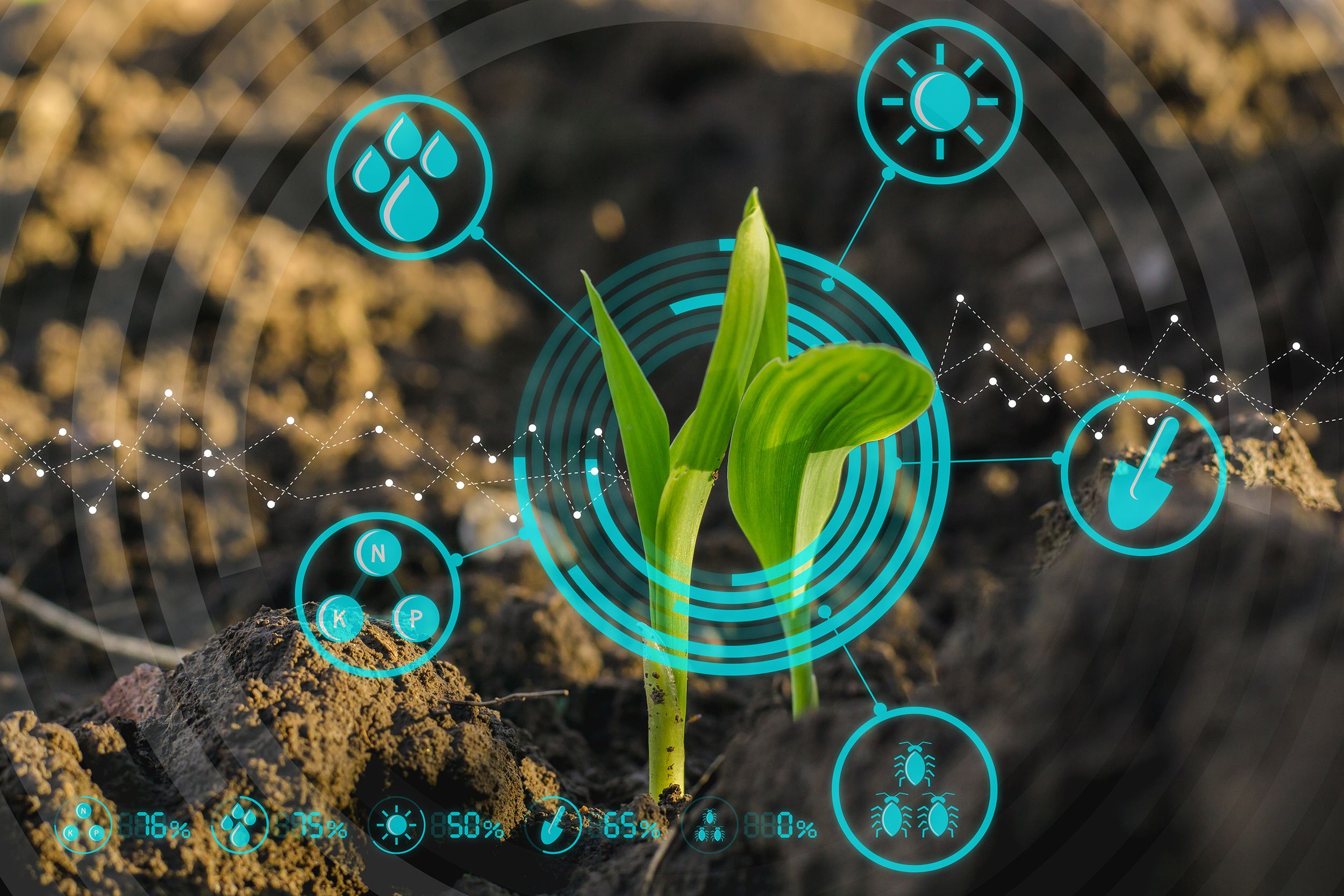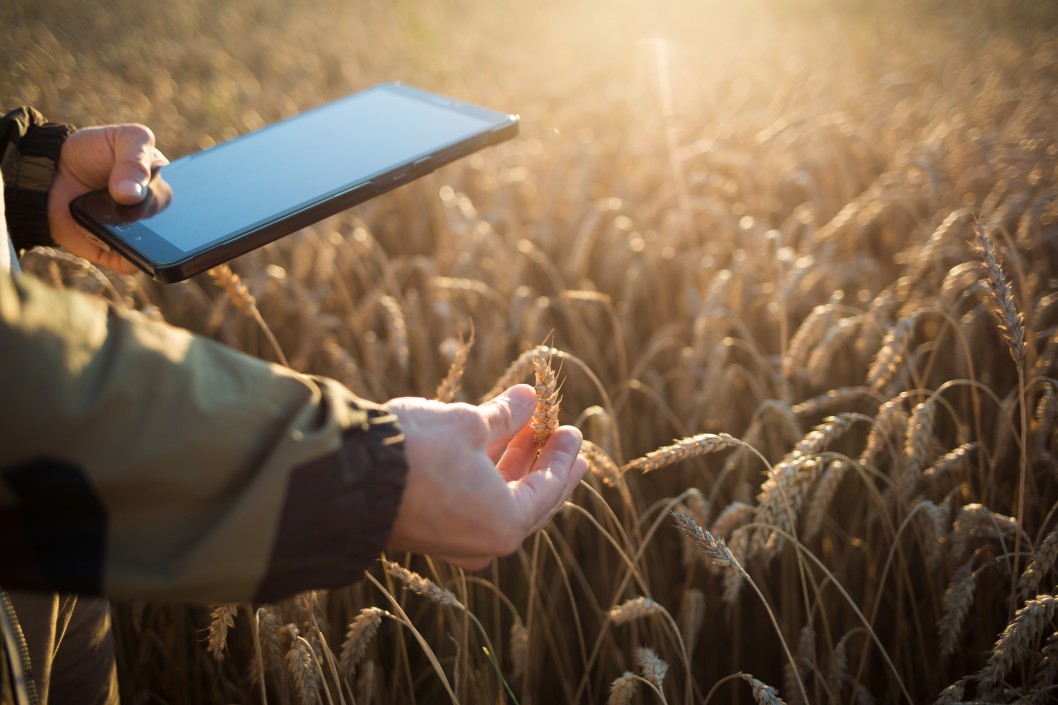What is predictive agriculture?

Predictive agriculture refers to the use of advanced technologies and analytics to predict and optimize various aspects of agricultural practices. This approach utilizes data from various sources, such as weather patterns, soil quality, crop growth, and pest management, to help farmers make informed decisions and improve the efficiency and productivity of their operations.
Predictive agriculture can involve a range of tools and techniques, including machine learning algorithms, remote sensing technologies, and predictive analytics software. For example, farmers can use predictive analytics to forecast crop yields and optimize fertilizer and irrigation applications. They can also use remote sensing data to monitor crop growth and detect signs of stress or disease before they become severe.
Overall, predictive agriculture aims to leverage data and technology to help farmers make more precise and efficient decisions, reduce waste and improve sustainability, and ultimately increase profitability.
How is data analytics used in agriculture?
Data analytics is becoming increasingly important in modern agriculture as it allows farmers to make informed decisions based on insights derived from data. Here are some examples of how data analytics is used in agriculture:
- Predictive analytics: Farmers can use predictive analytics to forecast crop yields, optimize planting times, and predict weather patterns that could impact their crops. This information helps farmers make data-driven decisions to maximize crop yield and reduce waste.
- Remote sensing: Remote sensing technologies like satellites, drones, and ground sensors can collect data on crop growth, soil moisture, and weather conditions. Farmers can use this information to monitor crop health, detect issues early, and adjust farming practices accordingly.
- Precision agriculture: Precision agriculture involves using data analytics to manage farm inputs, such as fertilizers and pesticides, to optimize yield while minimizing waste. Farmers can use soil and plant data to create maps of their fields and apply inputs more precisely where needed.
- Supply chain optimization: Data analytics can help farmers and agribusinesses optimize supply chains by tracking inventory levels, predicting demand, and improving logistics. This can lead to reduced waste and increased efficiency in the food production and distribution process.
Overall, data analytics has the potential to improve efficiency and sustainability in agriculture, reduce waste, and increase profitability for farmers and agribusinesses.
What are 4 examples of applications of predictive analytics in agriculture?
Sure, here are four examples of applications of predictive analytics in agriculture:
- Crop Yield Prediction: Farmers can use predictive analytics to estimate the yield of their crops based on factors such as weather conditions, soil moisture, and other environmental factors. This information can be used to plan for harvest, optimize irrigation and fertilization, and make informed decisions about crop rotations.
- Pest Management: Predictive analytics can be used to monitor and predict pest infestations, which can help farmers take proactive measures to prevent outbreaks. For example, farmers can use data on insect populations and weather patterns to determine the best time to apply pesticides, reducing the amount of chemicals used while improving efficacy.
- Soil Health Monitoring: Predictive analytics can be used to monitor soil health and predict future nutrient deficiencies, allowing farmers to take corrective measures to maintain soil health and optimize crop yields. This can include analyzing data on soil pH, nutrient levels, and microbial populations.
- Supply Chain Optimization: Predictive analytics can be used to optimize the supply chain for agriculture, from farm to table. This can include predicting demand for specific crops, optimizing shipping and logistics, and minimizing waste throughout the supply chain. By analyzing data on purchasing patterns, shipping routes, and inventory levels, farmers and agribusinesses can make informed decisions to reduce waste, optimize pricing, and improve profitability.
Overall, predictive analytics has the potential to transform agriculture by improving efficiency, reducing waste, and increasing profitability for farmers and agribusinesses.

What are the benefits of predictive analytics in agriculture?
There are many benefits of predictive analytics in agriculture. Here are some of the most significant ones:
- Improved Efficiency: Predictive analytics can help farmers optimize their operations, resulting in improved efficiency and productivity. By using data to predict crop yields, optimize irrigation and fertilization, and monitor weather patterns, farmers can make informed decisions that lead to higher yields and reduced waste.
- Reduced Costs: Predictive analytics can help farmers reduce costs by optimizing resource usage, reducing the amount of fertilizer and pesticide used, and reducing labor costs. By using data to inform decisions, farmers can save money while still maintaining high levels of productivity.
- Increased Sustainability: Predictive analytics can help farmers manage their resources more sustainably, resulting in reduced environmental impact. By optimizing resource usage, farmers can reduce their use of chemicals and other inputs, leading to a more sustainable approach to agriculture.
- Improved Crop Quality: Predictive analytics can help farmers produce higher quality crops by optimizing growing conditions and reducing the risk of pests and diseases. This can lead to improved crop quality and higher prices in the market.
- Better Risk Management: Predictive analytics can help farmers manage risks such as weather events and crop failures. By using data to predict potential risks, farmers can take proactive measures to mitigate those risks and protect their crops and profits.
Overall, the benefits of predictive analytics in agriculture are significant, and they can help farmers improve efficiency, reduce costs, increase sustainability, improve crop quality, and manage risks more effectively.
How IoT and Predictive Analytics can solve the problems
IoT (Internet of Things) and predictive analytics can work together to solve many problems in agriculture. Here are some examples:
- Precision Agriculture: IoT sensors can collect data on soil moisture, temperature, and other environmental factors in real-time, which can be analyzed using predictive analytics. This information can help farmers make data-driven decisions about when to water, fertilize, and plant their crops, resulting in optimized crop yield and reduced waste. For this, you can use Senzmate's Senzagro device.
- Pest and Disease Management: IoT sensors can also be used to monitor for pests and diseases in crops. By collecting data on crop health and using predictive analytics to analyze that data, farmers can take proactive measures to prevent outbreaks and minimize the use of pesticides and other chemicals.
- Equipment Maintenance: IoT sensors can be used to monitor the condition of farm equipment and predict when maintenance is needed. Predictive analytics can analyze the sensor data and alert farmers when equipment is at risk of failure, reducing downtime and improving productivity.
- Supply Chain Optimization: IoT sensors can be used to track inventory levels and monitor shipping conditions, while predictive analytics can be used to forecast demand and optimize supply chain logistics. This can help farmers and agribusinesses reduce waste and improve profitability.
Overall, IoT and predictive analytics can work together to solve many of the problems faced by farmers, from optimizing crop yield to reducing waste and improving sustainability. By leveraging data from IoT sensors and applying predictive analytics techniques, farmers can make more informed decisions and improve their operations.
What is Predictive Analytics Process?
The predictive analytics process is a series of steps that data analysts and data scientists follow to develop and deploy predictive models. Here are the steps involved in the predictive analytics process:
- Problem Definition: The first step in the predictive analytics process is to define the problem that the model will solve. This involves identifying the business objective, the data sources, and the key performance indicators (KPIs) that will be used to measure success.
- Data Collection: The second step is to collect relevant data from various sources. This may involve scraping data from websites, collecting data from IoT sensors, or accessing data from internal databases.
- Data Cleaning and Preprocessing: The third step is to clean and preprocess the data to ensure that it is accurate and consistent. This involves removing duplicates, handling missing data, and converting data into a format that can be used for analysis.
- Data Exploration and Analysis: The fourth step is to explore and analyze the data to identify patterns and trends. This may involve using statistical methods, data visualization tools, and machine learning algorithms.
- Model Development: The fifth step is to develop a predictive model based on the insights gained from data exploration and analysis. This involves selecting an appropriate algorithm, training the model on the data, and tuning the model to improve its accuracy.
- Model Evaluation: The sixth step is to evaluate the performance of the model using metrics such as accuracy, precision, and recall. This helps ensure that the model is performing well and is suitable for deployment.
- Model Deployment: The final step is to deploy the model in a production environment. This involves integrating the model into the business process and ensuring that it is working correctly. Ongoing monitoring and maintenance are also required to ensure that the model continues to perform well over time.
Overall, the predictive analytics process is a structured approach to developing and deploying predictive models, which helps ensure that the models are accurate, effective, and provide value to the business.

No comments yet